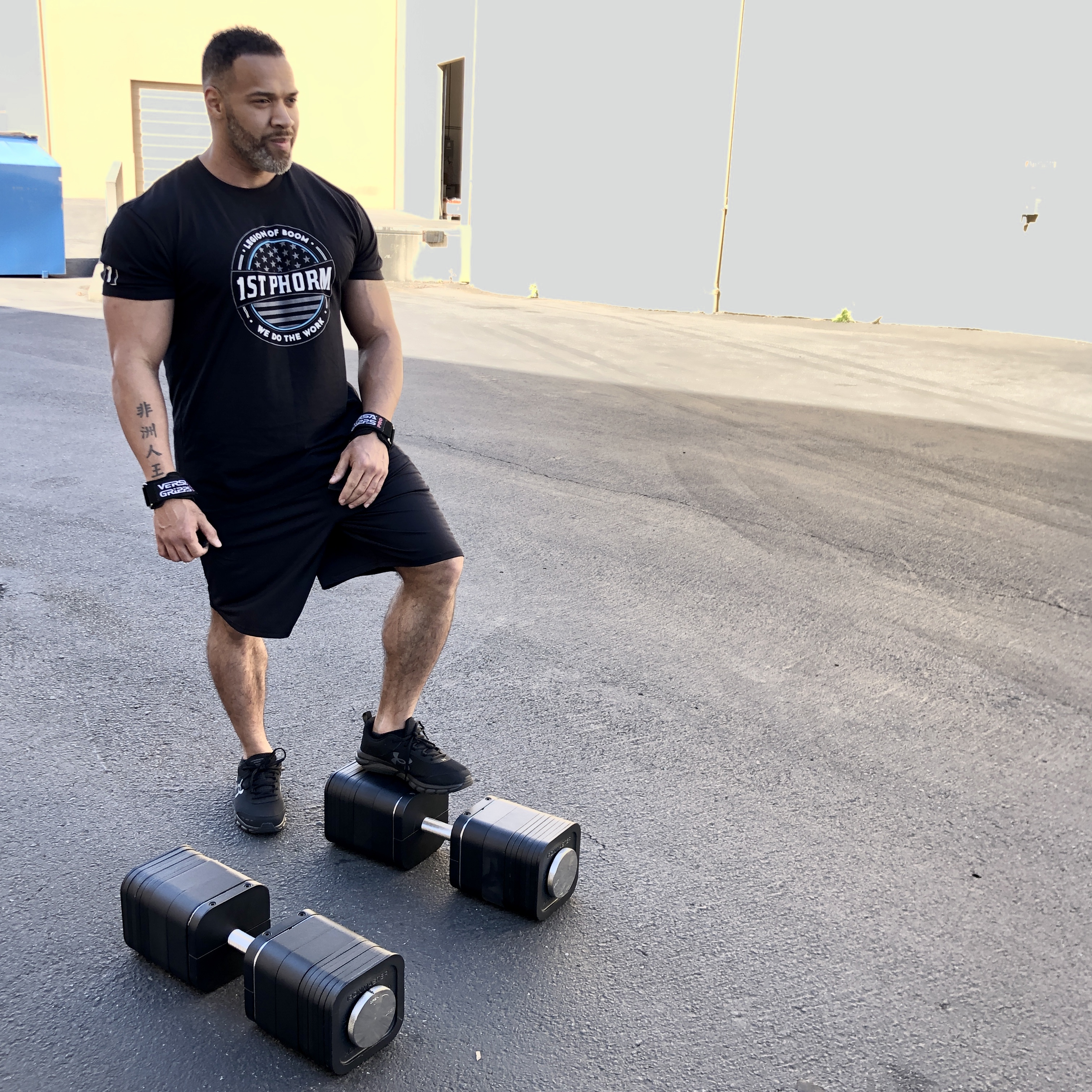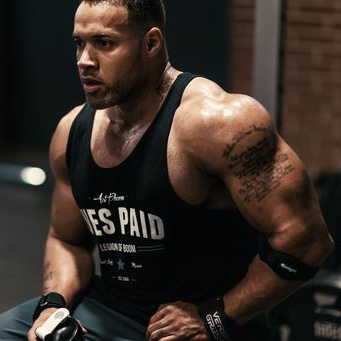Blog
Fundamentals of Resistance Training, Part 2

A Closer Look at Resistance Training
In Part 1 of Fundamentals of Resistance Training, we highlighted the key elements of a solid foundation for any resistance training program. In this blog, we will do a deep dive on some of the most common variables and considerations to keep in mind as you set out on your fitness journey.
Adaptations of the OPT Model
There are many different training models and tools that can be used to create a sport or goal-specific adaptations. As a NASM Master Trainer and Performance Enhancement Specialist, my weapon of choice is the NASM Optimal Performance Training Model (OPT). Using this as the foundation, it is easy to adapt this framework to specific goals such as powerlifting, bodybuilding, or any sport-specific goals.
The stabilization, corrective exercise, and strength endurance phases all prepare the body for more intense training by strengthening the intrinsic core and connective tissues, improving body mechanics, and enhancing proprioception. Combined, these factors will help improve overall performance and avoid injury.
3 Mechanisms for Muscle Hypertrophy and Growth
1. Mechanical Tension (the amount of force exerted on a muscle)
2. Training-induced muscle damage (Micro-tears & inflammatory response from intense training)
3. Metabolic Stress (chemical reactions in the body and muscle volumnization)
Reference NASM “Guide to Bodybuilding” nasm.org
During training, one can leverage these principles to maximize effectiveness in the gym and get the most out of each workout. The average time spent in the gym for most beginners is 30-45 mins, whereas it is not uncommon for more advanced lifters and athletes to spend 60+ mins training. Personally, I do not recommend training longer than 60-70 mins per session (resistance training, less cardio) as you will being to see diminishing returns.
This is caused by metabolic stress which causes your body to switch from an anabolic state into a catabolic state. During intense exercise, your body relies primarily on glucose/muscle glycogen via glycolysis in the anaerobic energy pathway, as well as the resulting Adenosine triphosphate (ATP). ATP is the immediate and primary energy source used to drive muscle contraction.

Source: https://blog.nasm.org/fitness/exercise-essentials-a-better-understanding-our-aerobic-energy-pathway
Combining proper nutrition aka fuel will ensure your body has the right ingredients to produce chemical reactions critical to muscle building.
For instance, pre/Intra-workout I recommend adding a few products into your regimen to enhance your performance, energy, and recovery.
Andre’s Actual Pre-Workout:
• 1 full scoop 1 st Phorm AlphaCre (Creatine Monohydrate with Beta Alanine)
• 1 full scoop 1 st Phorm AlphaSurge – Candy Blast
The creatine supports ATP energy production paired with amino acid Beta Alanine which will help you train harder for longer by buffering lactic acid. Amplify strength and muscle volume. Alpha Surge DRV is a vasodilator that will improve Oxygen and nutrient delivery to the muscles thereby enhancing muscle hypertrophy.
Intra-Workout:
• 1 full scoop EAA’s or BCAA’s
• 1/3 scoop 1 st Phorm Ignition (Dexanhydrous Glucose)
This will provide glucose energy and support lean muscle tissue.
Post-Workout:
• 3 scoops Phormula-1 (Hydrolyzed Whey Protein, rapid assimilation)
• 1 scoop Glutamine (micronized powder)
• 2/3 scoop 1 st Phorm Ignition
This will spike your glucose & insulin post-workout and signal your muscle receptors to open and shuttle in bioavailable nutrients to promote recovery and growth. Be sure to have this shake within the 30 min anabolic window when your body is most sensitive. Lactate is elevated after intense exercise which in turn produces the acute release of anabolic hormones (i.e. testosterone, insulin-like growth factor, etc.).
Acute Variables:
Sets – The volume of sets can be modified over time as your training progress. Starting out, try shooting for 3 sets of a few different exercises for each major muscle group (or complex movements). For intermediate lifters, increase your set volume to 4-5 sets. For advanced lifters or athletes, it is common to see as many as 6-7 working sets per exercise.
Reps – Similar to sets, reps are an opportunity to manipulate training volume. For most endurance and stability programs, you will see reps in the 12-20 rep range for 50-70% 1RM. For strength hypertrophy, 6-12 reps with moderately heavy weight 75-85% 1RM are most effective. For max strength and powerlifting, 1-5 reps are ideal at 85-100% 1RM.
For the best all-around workout, I recommend pyramiding up in weight over the course of your working sets. This will maximize hypertrophy and still work the high and low end of the spectrum.
Cadence – This is the timing of your concentric and eccentric motions during a lift. This can vary depending on the specific goal. For example, stability and strength-endurance type of exercises may use a 4/2/1 (seconds) tempo (eccentric/isometric stabilization/concentric) whereas the typical cadence for hypertrophy training is 2/0/2.
Rest Intervals – Another often overlooked acute variable is rest intervals. This refers to the rest between sets. For most training, 0-60 seconds is sufficient to replenish 85 to 90% of ATP and PC and keep your muscles pumped up. For strength endurance and stabilization, 0-90 seconds is recommended. If you are training for maximal strength/powerlifting, be sure to rest 3-5 mins between sets to ensure your system is fully recovered.
Vertical vs Horizontal Loading:
There are several different ways to execute your training. Horizontal loading is the most common. In horizontal loading, each exercise or muscle group is completely trained before moving on to the next exercise. Vertical loading is often seen in circuit training when each circuit is comprised of a sequence of back-to-back exercises. i.e. chest press > squats > rows, repeat. Both have benefits and serve different purposes. For most hypertrophy training and those chasing the pump, horizontal loading is usually the weapon of choice.
Progressions to Avoid Plateau:
Remember, your body is always in a state of adaptation. You want to improve your cardiovascular performance and VO2 threshold, you will want to stress and challenge that area of the nervous system. If you want to improve your maximal strength (i.e. Powerlifting), you will need to train low reps, heavy loads to create that specific adaptation. The key is to shift training phases every 3-4 weeks (or as needed) to create muscle confusion and force your body to continuously adapt to the stress placed upon it.
There are several levers you can pull such as increased training intensity, increased volume, increased loading, shorter rests, shocking methods, variety of equipment, more or less stability, etc.
Common Training Splits and Periodization
Here are some of the most common training splits for beginner to advanced athletes:
EXAMPLE A: |
|||||||
Workout |
Sun |
Mon |
Tue |
Wed |
Thur |
Fri |
Sat |
Phase 1 Stabilization Total Body Workout |
X |
||||||
Phase 2 Strength Endurance |
X |
||||||
Phase 1 Stabilization Total Body Workout |
X |
||||||
Phase 2 Strength Endurance |
X |
||||||
15 mins Cardio |
X |
||||||
REST DAY no weights |
X |
X |
X |
||||
EXAMPLE B: |
|||||||
Workout |
Sun |
Mon |
Tue |
Wed |
Thur |
Fri |
Sat |
Phase 4 Strength Hypertrophy: Leg Day |
X |
||||||
Phase 4 Strength Hypertrophy: Back & Chest |
X |
||||||
Phase 4 Strength Hypertrophy: Shoulders & Arms |
X |
||||||
Phase 5 Max Strength: Pull Day |
X |
||||||
Phase 5 Max Strength: Push Day |
X |
||||||
20 mins Cardio |
X |
X |
|||||
REST DAY no weights |
X |
X |
|||||
EXAMPLE C: |
|||||||
Workout |
Sun |
Mon |
Tue |
Wed |
Thur |
Fri |
Sat |
Phase 4 Strength Hypertrophy: Leg Day 1 |
X |
||||||
Phase 4 Strength Hypertrophy: Chest, Shoulders, Tri’s 1 |
X |
||||||
Phase 4Strength Hypertrophy: Back & Bi’s 1 |
X |
||||||
Phase 4 Strength Hypertrophy: Leg Day 2 |
X |
||||||
Phase 4 Strength Hypertrophy: Chest, Shoulders, Tri’s 2 |
X |
||||||
Phase 4Strength Hypertrophy: Back & Bi’s 2 |
X |
||||||
30 mins Cardio |
X |
X |
X |
||||
REST DAY no weights |
X |
||||||
Example NASM Workout:
Total Body Workout with the goal of building muscle and burning fat.
WARM-UP |
|||||
Exercise |
Sets |
Duration |
Coaching Tip |
||
SMR Foam Roll: Calves, Erector Spinae, Lats |
1 |
As needed |
Hold tender spots > 30 s or until you feel it relax |
||
Static Stretching: Hamstrings, Pecs, Lats |
1 |
As needed |
|||
Cardio Warm-up |
1 |
15 mins |
Any modality 60-70% MHR |
||
CORE/BALANCE/PLYOMETRIC |
|||||
Exercise |
Sets |
Reps |
Tempo |
Rest |
Coaching Tip |
Ball Squat |
1 |
15 |
Slow |
0-60 s |
|
Ball Bridge |
1 |
15 |
Slow |
0-60 s |
|
Push-ups |
1 |
15 |
Slow |
0-60 s |
|
SPEED/AGILITY/QUICKNESS |
|||||
Exercise |
Sets |
Reps |
Tempo |
Rest |
Coaching Tip |
N/A |
|
|
|
|
|
RESISTANCE |
|||||
Exercise: Horizontal Loading |
Sets |
Reps |
Tempo |
Rest |
Coaching Tip |
Ironmaster DB Squat to OH Press |
4 |
8-12 |
2/0/2 |
0-60 s |
Squat to parallel, squeeze glutes at top of the movement. Knees should track over 2nd/3rd toes |
Ironmaster DB Bent Row to RDL |
4 |
8-12 |
2/0/2 |
0-60 s |
Full ROM, squeeze glutes |
Ironmaster DB Chest Press off Stability Ball |
4 |
8-12 |
2/0/2 |
0-60 s |
Keep core tight |
Superset: Ironmaster DB Bicep Curls X Supine Tricep Extensioins (Skull Crushers) |
4 |
8-12 |
2/0/2 |
0-60 s |
Alternating Laying on bench |
COOL-DOWN |
|||||

About the author Andre Adams
With over 15 years of experience, Andre Adams is a National Academy of Sports Medicine (NASM) Master Trainer with credentials in women's fitness specialist (WFS), performance enhancement specialist (PES), mental toughness (MT), weight loss specialist (WLS), Group Personal Training Specialist (PTS), and fitness nutrition specialist (FNS). Additionally, he offers advice to help curb childhood obesity in adolescents.
Andre is also a professional athlete in the International Federation of Bodybuilding (IFBB) pro league having competed in the 2015 Mr. Olympia and Arnold Classic professional physique divisions.
